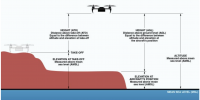Just to add this to the discussion.
I am Part 107 Licensed and I recently received an Authorization from the FAA through the FAADroneZone to fly for a 3-month period in a Zero (0)-Foot Maximum UAS Facility Map Altitude Grid wholly within the Controlled Class D Airspace of Langley AFB, VA.
The purpose of this Authorization was to perform Roof and Gutter Inspections on every home on a two-block length of a local street. Since the neighborhood is entirely within a "Drone Taxi Zone" (cannot fly at all in this area…) and the Neighborhood is filled with old growth, mature trees that average just over 100-feet, I restricted my request to a maximum altitude of 75-feet.
This is the way the FAA restricted me to this operation… and it's all AGL…
View attachment 161241
I guess they wanted to avoid a repeat of last month's shoot down of the "Chinese Party Balloon" (LoL)…
View attachment 161242














